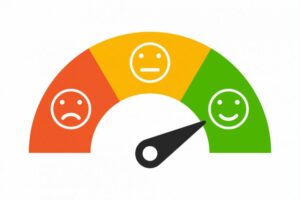Making sure employees are happy with IT services isn’t always just about rolling out the latest technology. Rather it is about continuously listening to what users need and calibrating your actions based on their evolving priorities.
It’s a realization that I shared with you in April in the blog, Listening Like Never Before: Tailoring IT Experiences to User Needs, and one that Dell Digital, Dell’s IT organization, has continued to follow as we advance our workforce transformation to create a modern, unified workforce.
 After all, our unified workforce effort using Dell Technologies Unified Workspace (DTUW), is about providing a single, consistent experience to our users on any device, wherever they are. To create that experience requires us to listen to their feedback and adjust our technology and service delivery accordingly.
After all, our unified workforce effort using Dell Technologies Unified Workspace (DTUW), is about providing a single, consistent experience to our users on any device, wherever they are. To create that experience requires us to listen to their feedback and adjust our technology and service delivery accordingly.
Over the past year, as we gauged our users’ sentiment using our quarterly experience survey (IT Pulse)—focus-group engagement sessions and an interactive intranet “listening post” site—we have learned a thing or two about what’s important and what’s not.
Those user insights are helping our Team Member Experience team (TMX) shape the IT experience as we move towards modern management and modern provisioning that will enable our team members to be productive anywhere, anytime in their work, as well as being seamlessly connected in their personal lives.
Don’t Overlook Process and Enablement
Biggest lesson: Don’t just make new technologies available and expect team member satisfaction to climb. There may be other factors at play, like design or process gaps, that you aren’t seeing. You need to really listen better and think better about the actions you take and what they mean to users. Remember, IT needs to address people and process, as well as technology.
For example, the TMX team was striving over the past year to move the needle on our user experience sentiment. Our main measure of user satisfaction is our IT Pulse Survey, a quarterly survey that goes beyond the usual break-fix transactional questions on technology to probe respondents’ view of their overall IT experience. Armed with Pulse feedback along with insights we gained from our regular business interactions with users, we aimed to increase our Pulse score from 50 to 70 percent and beyond.
One key pain point was the low user score on our intranet search capability. It was too difficult, they said, to efficiently find what they were looking for. So we did the IT thing. We bought a new search engine and waited for our scores to go up. But IT Pulse didn’t change.
When we looked closer, while a new search engine certainly improved the speed of the search, users continued to be unhappy because they couldn’t easily navigate our intranet and find what they were looking for. The site wasn’t intuitive. It didn’t offer the personal features they wanted.

So we are now on an ongoing journey of modernizing our intranet and personalizing it to people’s needs rather than maintaining the corporate-focused design we had in the past.
With the first phase completed, our Pulse scores around search and intranet capabilities have significantly improved.
We had the same a-ha moment with tackling lower scores on collaboration tools. Rolling out the OneDrive collaboration tool in recent months did not increase Pulse scores as much as we had hoped. What we discovered was there still was a significant amount of work needed to modernize our legacy collaboration tool SharePoint, widely used across the company. We are doing that, and our scores continue to lift.
Summary
It’s critical to listen to users and not just assume their needs can be met by deploying the latest technology. However, listening and acting on demands are only the beginning of maintaining a successful unified workforce experience and unlocking innovation. Being responsive to user feedback also means regularly measuring their sentiment. What’s more, even the most tailored array of capabilities won’t make users happy if they don’t work.
Stay tuned for Part 2 of this blog series, which will entail being responsive to our users and some do’s and dont’s.
What is your company doing to optimize its ability to manage all devices, anytime and anywhere to deliver the best experience to your team members and the greatest value to the business?


